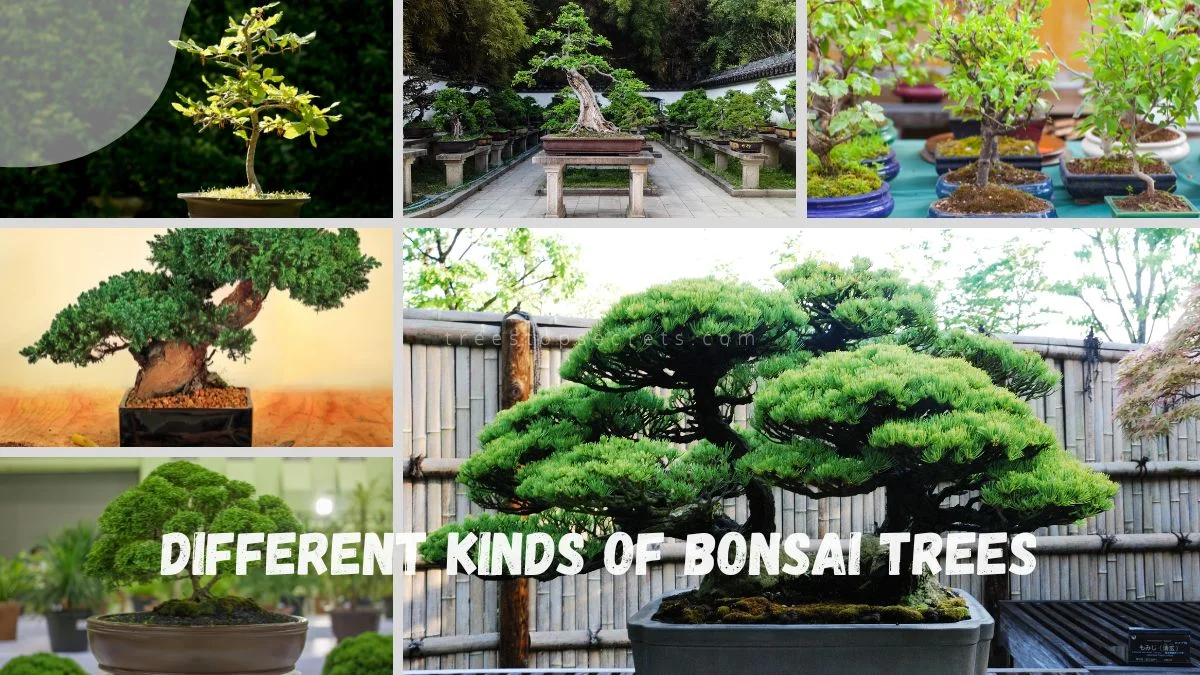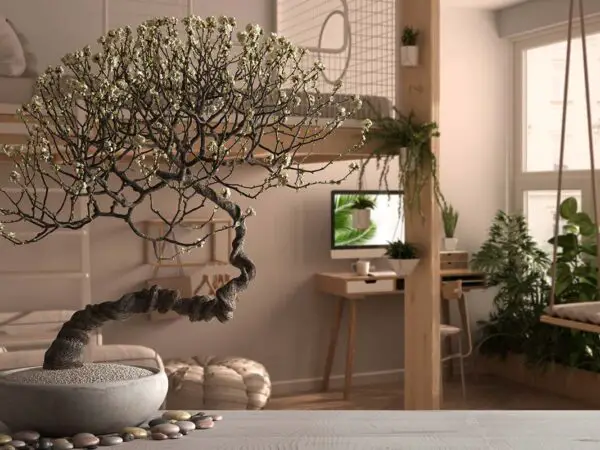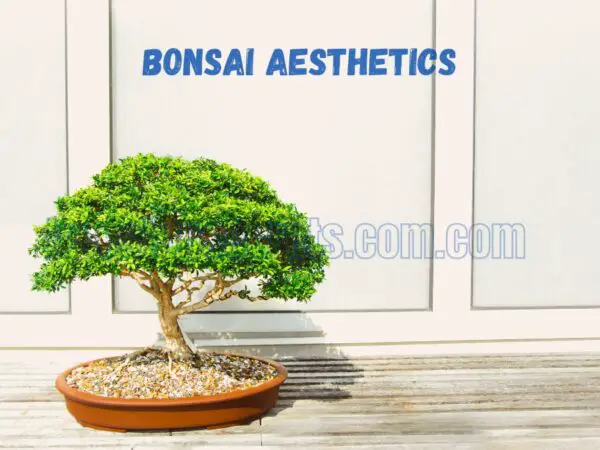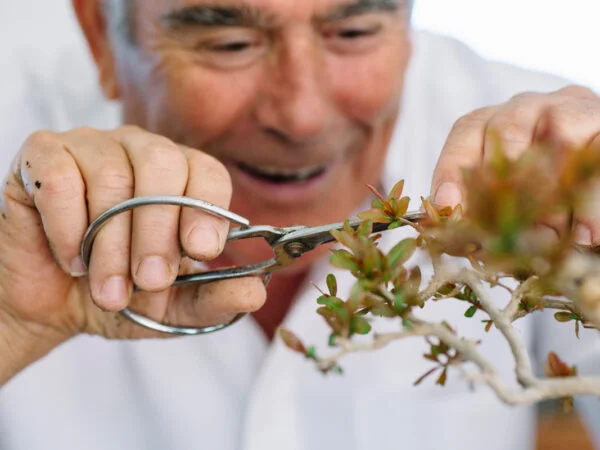Did you know that there are over 1000 different types of bonsai trees worldwide? From the classic Juniper to the unique Ficus, the variety in shapes, sizes, and colors of popular bonsai varieties is astounding. Each bonsai tree tells a story through its intricate design and symbolism, making them not just plants but living pieces of art. Whether you're a seasoned bonsai enthusiast or a beginner looking to explore this ancient horticultural practice, the world of bonsai trees offers something for everyone.
Key Takeaways
- Explore Different Bonsai Species: Understand the variety of bonsai trees available to choose the one that suits your preferences and environment.
- Start with Beginner-Friendly Bonsai: Begin your bonsai journey with species that are easier to care for, such as Ficus or Jade plants.
- Master Care and Maintenance: Regularly attend to your bonsai's watering, pruning, and light requirements to ensure its health and longevity.
- Progress with Specialized Guides: Utilize specialized resources to enhance your bonsai skills and knowledge, catering to specific species or techniques.
- Advance Your Techniques Gradually: Explore advanced bonsai techniques like wiring and grafting as you gain experience and confidence in your skills.
- Experience Aesthetic Benefits: Enjoy the aesthetic beauty of bonsai trees while benefiting from the calming and stress-relieving effects they offer for overall well-being.
Understanding Bonsai
Basics and History
Bonsai cultivation originated in China over a thousand years ago, evolving into an art form that symbolizes harmony, balance, and peace. Cultural significance is attached to bonsai trees, representing nature's beauty in miniature form. The basic principles of bonsai design focus on proportion, balance, and simplicity.
Types and Species
Bonsai trees come in various categories based on species, including Broadleaf Evergreen, Deciduous, and Conifer types. Each category has distinct characteristics: Broadleaf Evergreen bonsai trees maintain their leaves year-round; Deciduous bonsai trees shed their leaves seasonally; Conifer bonsai trees feature needle-like or scale-like leaves. Popular examples include the Ficus for Broadleaf Evergreen, Maple for Deciduous, and Pine for Conifer species.
Growing Bonsai Trees
To successfully grow bonsai trees, mastering essential steps is crucial. Care requirements vary among different types of bonsai trees; for instance, Broadleaf Evergreens need regular pruning and shaping. Understanding the optimal environmental conditions is vital for healthy bonsai growth, such as providing adequate sunlight and proper watering.
Common Bonsai Species
Juniper and Pine
Juniper bonsai trees are known for their distinctive needle-like foliage and rugged bark, symbolizing resilience and strength. These trees thrive in well-draining soil and require ample sunlight for optimal growth. Prune regularly to maintain their iconic shape.
Pine bonsai trees, on the other hand, feature characteristic needle clusters and a sturdy trunk, representing longevity and wisdom. These trees prefer slightly acidic soil and moderate watering to prevent root rot. Ensure proper aeration to promote healthy root development.
Japanese Maple
Japanese Maple bonsai trees exhibit exquisite leaf shapes and vibrant colors, adding a touch of elegance to any collection. These trees need partial shade to protect their delicate foliage from scorching sun rays. Regularly check for pests and diseases to maintain their health.
Flowering Varieties
Flowering bonsai tree species, such as Azaleas and Cherry Blossoms, offer captivating blooms throughout the year. Understanding their blooming patterns helps in providing adequate care, including proper fertilization and pruning techniques. Enjoy the colorful display by nurturing these blossoming beauties.
Unique Choices
Exploring unique bonsai tree species like Ficus Retusa and Baobab presents an opportunity to cultivate something truly extraordinary. These choices require specialized care due to their specific environmental needs and growth patterns. Embrace the challenge of nurturing these rare specimens for a rewarding bonsai experience.
Beginner-Friendly Bonsai
Easy Care Species
When starting with beginner bonsai, it's crucial to choose low-maintenance species. Consider Jade Plant or Ficus varieties. These trees thrive with minimal care, making them perfect for beginners. Research each species' specific care requirements before purchasing.
For beginner bonsai growers, opting for a Chinese Elm or Juniper can be ideal. These species are hardy and forgiving, tolerating occasional mistakes in care. They are resilient and adaptable, perfect for those new to bonsai cultivation. Ensure they receive adequate sunlight and water regularly.
Maintenance Tips
To ensure the health of your bonsai, mastering maintenance techniques is essential. Regular pruning helps maintain the tree's shape and encourages growth. Wiring can aid in shaping branches and creating artistic designs. Remember to remove wires promptly to prevent damage.
Understanding the importance of regular maintenance routines is key to successful bonsai cultivation. Routine tasks include checking for pests, watering appropriately, and repotting when necessary. These practices promote the overall well-being of your bonsai tree and enhance its longevity.
Selecting Your First Bonsai
When selecting your first bonsai tree, consider factors like your available time for care and the space you have for the tree. For beginners, Ficus Retusa or Crassula Ovata are excellent choices due to their resilience and adaptability. These species can thrive indoors or outdoors.
Exploring beginner-friendly options such as Chinese Elm, Juniper, or Ficus Ginseng can provide a rewarding experience for novice enthusiasts. These trees are robust, forgiving of minor errors, and respond well to basic care practices. Choose a species that aligns with your skill level and preferences.
Care and Maintenance
Watering Essentials
Proper watering is crucial for the health of bonsai trees. Each species has specific watering needs. Ensure soil moisture remains optimal for healthy growth.
Different bonsai species require varying watering frequencies and techniques. Research your tree type to provide adequate watering care.
Maintain optimal soil moisture by checking the soil regularly. Adjust your watering schedule based on the tree's needs and environmental conditions.
Soil and Fertilizing
Quality soil and proper fertilization are essential for successful bonsai cultivation. Choose soil mixes that suit your bonsai tree's species.
l quality directly impacts the health and growth of bonsai trees. Use well-draining soil to prevent waterlogging and root rot.
Fertilize your bonsai trees regularly to provide essential nutrients. Follow guidelines for fertilizing frequency and amounts to promote healthy growth.
Pruning Techniques
Pruning plays a significant role in shaping and maintaining the aesthetics of bonsai trees. Master various pruning techniques for optimal tree health.
Branch pruning helps maintain the desired shape of your bonsai tree. Remove unwanted branches to enhance the tree's appearance.
Leaf pruning is essential for maintaining the balance and aesthetics of your bonsai tree. Regularly trim excess leaves to promote healthy growth.
Specialized Bonsai Guides
Juniper Care
Juniper bonsai trees require specific care to thrive. Regularly watering is crucial for their health and growth. Pruning junipers helps maintain their shape and promotes new growth. protecting them from extreme temperatures ensures their well-being.
- Water juniper bonsai trees regularly
- Prune junipers to maintain shape
- Protect from extreme temperatures
Pine Care
Maintaining Pine bonsai trees involves specialized care practices. Pruning and wiring techniques are essential for shaping Pines. Understanding the unique characteristics of Pines, such as needle retention, guides care routines for optimal growth.
- Practice pruning and wiring for shaping
- Consider needle retention in care routines
Japanese Maple Care
Detailed care instructions are necessary for Japanese Maple bonsai trees. Providing the right environmental conditions, including proper sunlight and humidity levels, is vital. Pruning and styling tips can enhance the aesthetic appeal of Japanese Maple bonsais.
- Ensure proper sunlight and humidity levels
- Use pruning and styling techniques for aesthetics
Chinese Elm Care
Chinese Elm bonsai trees have specific care requirements. Repotting and root pruning techniques help maintain their health. Creating ideal growing conditions, including well-draining soil and adequate sunlight, supports healthy Chinese Elm bonsai growth.
- Implement repotting and root pruning techniques
- Provide well-draining soil and sufficient sunlight
Advanced Bonsai Techniques
Styling and Shaping
Styling and shaping are crucial aspects of bonsai tree care. By pruning and wiring, bonsai enthusiasts can create unique designs. These techniques play a vital role in enhancing the aesthetic appeal of bonsai trees.
- Pruning helps maintain the desired shape and size of the bonsai tree.
- Wiring allows for precise manipulation of branches to achieve specific styles.
- Styling and shaping require patience and attention to detail for successful results.
Repotting Basics
Mastering repotting is essential for maintaining bonsai tree health. Knowing the right times to repot is crucial for promoting optimal growth. Repotting ensures that the bonsai tree has enough space for root development.
- Repotting should be done every 1-2 years, depending on the tree species.
- Spring is generally the best time for repotting, as it coincides with the growing season.
- Proper repotting techniques help prevent root-bound conditions and promote overall tree vigor.
Pest Management
Pest management is a key aspect of bonsai tree maintenance. Recognizing common pests that can harm bonsai trees is essential for early intervention. Effective pest control strategies help protect the health and longevity of bonsai trees.
- Common pests include aphids, spider mites, and scale insects.
- Natural methods like neem oil and insecticidal soap can help combat pests organically.
- Chemical treatments should be used as a last resort and with caution to avoid harming the tree.
Bonsai for Aesthetics and Well-being
Bonsai in Home Decor
Embrace the beauty of bonsai trees in your home decor. These miniature wonders bring a touch of nature indoors. Consider placing a bonsai tree on a mantelpiece or as a centerpiece on your dining table. The small size of bonsai trees makes them versatile for various spaces.
Enhance your living environment with the benefits of bonsai trees in home decor. Bonsai trees not only add a visual appeal but also contribute to a sense of tranquility. The presence of these miniature trees can create a calming atmosphere in any room. Incorporate different types of bonsai trees to match your interior design style.
Unleash your creativity by exploring unique ways to display bonsai trees. Try hanging bonsai trees in decorative planters or showcasing them on stylish stands. Experiment with different bonsai pots and arrangements to find what suits your space best. Mix and match various bonsai species to create an eye-catching display.
Therapeutic Benefits
Delve into the therapeutic realm of cultivating bonsai trees. The process of nurturing these tiny trees offers numerous mental and emotional advantages. Engaging with bonsai cultivation can serve as a form of meditation, promoting mindfulness and relaxation. The act of caring for bonsai trees encourages stress relief and inner peace.
Discover how tending to bonsai trees can have profound effects on your well-being. The patience and dedication required in bonsai cultivation can foster a sense of accomplishment and fulfillment. Witnessing the growth and development of your bonsai tree can be incredibly rewarding, boosting self-esteem and happiness levels.
Immerse yourself in the world of bonsai cultivation to experience its therapeutic benefits firsthand. As you engage with these miniature marvels, you'll find yourself entering a state of flow, where time seems to stand still. The practice of caring for bonsai trees allows you to connect with nature on a deeper level, fostering a sense of harmony and balance.
Choosing Your Bonsai
Factors to Consider
When selecting your traditional bonsai choice, consider factors like sunlight, watering needs, and space requirements. Research the specific needs of each bonsai species before making a decision. Understanding these factors will ensure the successful growth and development of your bonsai tree.
To choose the right bonsai for you, identify your lifestyle habits. If you have a busy schedule, opt for low-maintenance bonsai varieties. For those with more time to dedicate to their trees, high-maintenance species can be rewarding. Matching the care needs of the bonsai with your lifestyle will lead to a harmonious relationship between you and your plant.
Environmental factors play a crucial role in the health of your bonsai tree. Factors such as humidity levels, temperature, and air circulation can impact the growth and overall well-being of your bonsai. Ensure that you place your bonsai in an environment that mimics its natural habitat to promote healthy growth.
Best Varieties for Beginners
For novice enthusiasts, bonsai choice is key. Consider starting with easy-to-care-for species like Ficus or Jade plants. These varieties are forgiving of beginner mistakes and adapt well to different environments. Their resilience makes them ideal choices for those new to bonsai cultivation.
Easy care varieties, such as Chinese Elm or Juniper, are perfect for beginners looking to hone their skills. These trees require minimal maintenance and are tolerant of occasional neglect. Their adaptability and forgiving nature make them excellent options for individuals just starting their bonsai journey.
The characteristics of certain deciduous bonsai trees make them particularly suitable for beginners. Species like Maple or Birch offer beautiful foliage changes throughout the seasons, providing visual interest and learning opportunities for novice growers.
Final Remarks
In your bonsai journey, you've delved into understanding these miniature trees, explored various species, and learned about care and maintenance. You've discovered beginner-friendly options, advanced techniques, and the aesthetic benefits of bonsai for your well-being. Now, it's time to choose the perfect bonsai that resonates with you.
As you venture into selecting your bonsai companion, remember the knowledge you've gained so far. Consider your commitment level, space availability, and the specific care requirements of each species. Your bonsai will not only enhance your living space but also bring tranquility and joy to your daily life. Take this opportunity to carefully pick a bonsai that aligns with your preferences and lifestyle, and embark on a rewarding journey of nurturing and cultivating a beautiful piece of nature in your home.
Frequently Asked Questions
What are the basic principles of bonsai care?
Bonsai care requires attention to watering, sunlight, pruning, and soil health. Ensure proper drainage, use well-draining soil, water when needed, provide adequate sunlight, and prune regularly to maintain the bonsai's health and shape.
How do I choose the right bonsai species for beginners?
For beginners, consider species like Ficus, Jade, or Juniper as they are resilient and forgiving. These species are relatively easy to care for and suitable for beginners learning the basics of bonsai cultivation.
Can bonsai trees be kept indoors?
Yes, certain bonsai species like Ficus, Jade, and Chinese Elm can thrive indoors with proper care. Ensure they receive adequate sunlight, humidity levels are maintained, and avoid placing them near drafts or heating vents.
What advanced techniques can enhance the aesthetics of a bonsai tree?
Advanced techniques such as wiring, grafting, defoliation, and carving can be used to refine the shape, style, and overall appearance of a bonsai tree. These techniques require skill and knowledge but can significantly enhance the aesthetics of your bonsai.
How do bonsai trees contribute to well-being?
Bonsai trees promote relaxation, mindfulness, and a sense of calm through their nurturing and meditative care routine. Engaging with bonsai gardening can reduce stress, improve focus, and create a peaceful environment that enhances overall well-being.
Image Source: Paid image from CANVA





